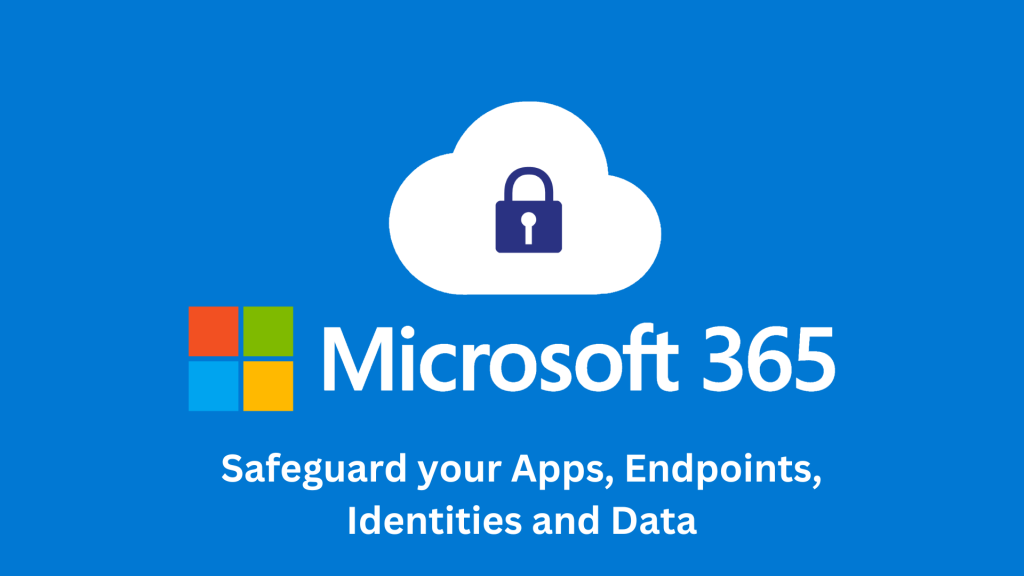The seamless integration of four crucial services within Microsoft 365 ensures comprehensive protection against potential cyber threats targeting Applications, Endpoints, Identities, and Data. Let’s delve into how these services work in tandem to defend against attacks and maintain security.
The Attack Scenario:
Imagine a user receives an email and unknowingly opens a malicious attachment. Additionally, the user might click on a link while browsing a website, inadvertently running a harmful program. This results in the theft of the user’s credentials, giving the attacker unauthorized access to the user’s shared resources, email, and files.
The Defense Measures:
Application and Endpoint Protection: To safeguard against email-based threats, Microsoft Defender for Office 365 takes charge of defending the user’s email account. When the user receives an email with an attachment, the attachment undergoes thorough inspection. Through the Safe Attachment policy, the attachment is sent to Microsoft, where it is scrutinized in a sandboxed environment for any malware.
Furthermore, to counteract potentially malicious links, the Safe Links policy comes into play. Links are sent to Microsoft for verification, and any suspicious links leading to harmful destinations are identified and blocked. Microsoft Office for 365 also diligently scans emails for malware. Moreover, anti-phishing policy settings can be enabled to defend against impersonation attacks.
Endpoint protection with Microsoft Defender for Endpoint involves the following measures for Windows devices:
-
- Microsoft Defender Antivirus detects and halts virus and malware threats on the endpoint device.
-
- Attack Surface Reduction targets executable files and scripts that attempt to download and run files.
-
- The Microsoft Defender Firewall can be configured to block unauthorized traffic, ports, applications, and networks.
Microsoft Cloud App Security provides further protection by enabling discovery of apps running within the organization. Policies can be set up to block unsanctioned applications from running on endpoints, with users receiving smart screen warnings if they attempt to run unauthorized apps.
Identity and Azure Active Directory Protection: For organizations with on-premises Domain Controllers, Microsoft Defender for Identity collaborates with Azure Active Directory. A sensor installed on the Domain Controller communicates with Microsoft to identify suspicious activities and patterns related to user logins. This analysis includes factors such as the frequency of access, previous logins, and peer sign-ins to the server.
Cloud App Security can also be configured to monitor sanctioned and unsanctioned apps.
Data and Resource Protection with Microsoft Defender for Office 365: To protect sensitive data and shared resources, Microsoft Defender for Office 365 employs various policies:
-
- Sensitivity Labels: These function as stamps or tags that can be applied to files and emails. Sensitivity labels allow encryption, ensuring only intended users can access the contents.
-
- Data Loss Prevention Policies (DLP): DLP policies safeguard financial, proprietary, credit card numbers, health records, and SSNs across Microsoft Office Applications.
-
- Retention Policies: Organizations may need to retain or delete data as per contractual agreements. Retain-only settings prevent permanent deletion, while Delete-only settings allow data to be permanently deleted after a specific period.
-
- Information Rights Management (IRM): IRM policies prevent unauthorized individuals from printing, forwarding, or copying sensitive information.
-
- Azure Information Protection: This extends policy sensitivity labels with additional features and functionalities.
By integrating these services, Microsoft 365 ensures a robust defense against a wide array of cyber threats, safeguarding vital components like Applications, Endpoints, Identities, and Data from potential attacks.
Take the first step towards a more secure future. We invite you to connect with us for a detailed discussion and personalized assessment of your cybersecurity requirements. Together, let’s build a resilient shield to safeguard your business from cyber adversaries.

